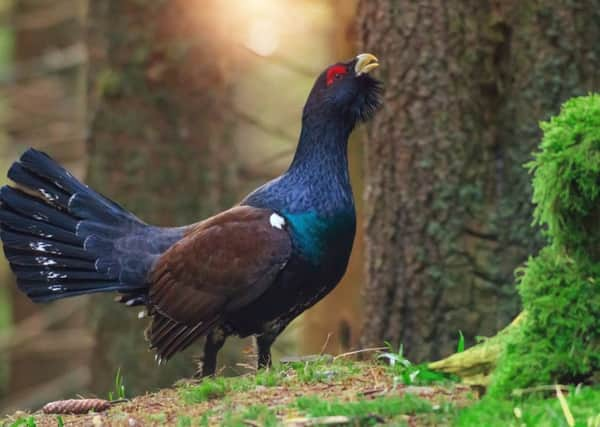Don’t let capercaillie become Scotland’s dodo – leader comment


The dodo, Tasmanian tiger and Pyrenean ibex were all extraordinary animals in their own way, all now extinct. Today, more than 30,000 species worldwide – 27 per cent of all those assessed by scientists – are threatened with the same fate, according to the International Union for Conservation of Nature. Even an animal as iconic as the African elephant is classed as “vulnerable” with loss of habitat the most serious threat.
In May this year, an international team of experts warned nature was declining at a rate unprecedented in human history. Sir Robert Watson, chair of the Intergovernmental Science-Policy Platform on Biodiversity and Ecosystem Services, said: “The health of ecosystems on which we and all other species depend is deteriorating more rapidly than ever. We are eroding the very foundations of our economies, livelihoods, food security, health and quality of life worldwide.”
Advertisement
Hide AdAdvertisement
Hide AdThe speed of the rate of extinctions is one reason why geologists are considering declaring the end of our current epoch, the Holocene, and the beginning of a new one, the Anthropocene, in an acknowledgement of just how profoundly we are changing life on Earth.
But most global problems are local ones too. And today conservationists are calling for urgent action to help some of Scotland’s most iconic wildlife. About one in nine species native to this country are at risk of disappearing because of a number of reasons, including climate change, urbanisation and agricultural intensification, that can be summarised in one word – humans.
We are incredibly intelligent and, as a species, have accomplished extraordinary feats, but sometimes we forget we are animals and, as such, entirely reliant on the health of the natural world. If we have now set in motion the sixth mass extinction of life in the Earth’s history – an astonishing and alarming feat – it would be monumentally foolish not to realise this could ultimately pose a threat to us too.
And, regardless of our own self-interest, surely we can all agree that the loss of the Scottish wildcat, red squirrel and capercaillie – among the species most at risk in this country – would leave Scotland a considerably poorer place.
These species are our elephants, our tigers, our gorillas. We should work hard to make sure they don’t become our Tasmanian tigers or our dodos.